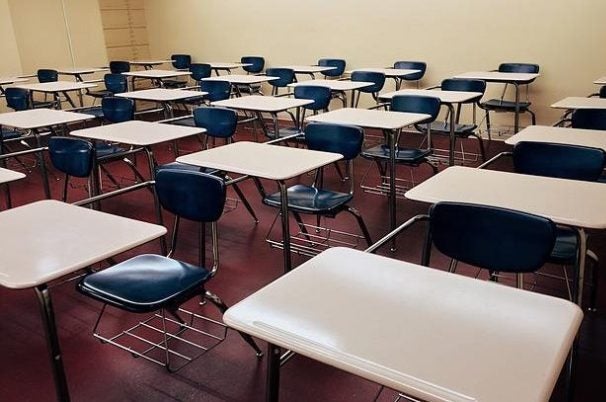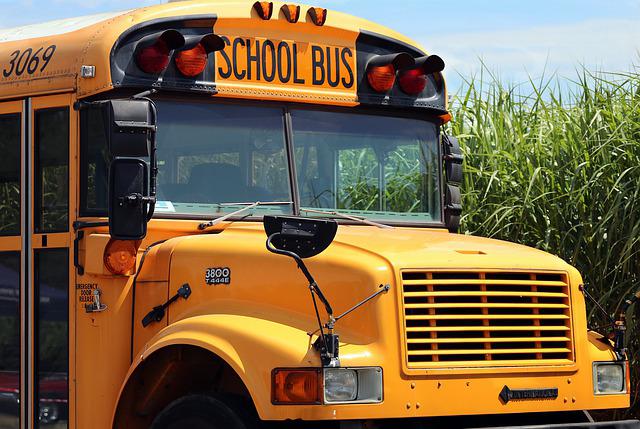Missing students: State gets involved as chronic absences spike
Published 10:51 pm Wednesday, October 4, 2023
|
Getting your Trinity Audio player ready...
|
Lunenburg County schools have a problem with chronic absences. In fact, it’s the only reason Central High wasn’t fully accredited without conditions. In the classroom, Central students met or exceeded the state standards on all tests. However, the problem is getting them in the classroom.
At Central High, 143 out of 482 students were chronically absent last school year. That adds up to 29.67%. It’s a massive jump from the prior term, 2021-22, where only 12.39% of students were chronically absent. It penalizes the school and district on state accreditation, but Lunenburg is far from alone.
Look around the state and you’ll hear similar stories, with chronic absenteeism being the main challenge a lot of districts face this year. A new state task force, launched last Friday, hopes to find solutions.
“Over the past three years, the chronic absenteeism rate has doubled,” said Secretary of Education Aimee Rogstad Guidera. “Today, nearly one in five students in Virginia are missing more than 10% of the school year. Common sense tells us that students must be in school. The data proves it—students who are chronically absent are 25% further behind in math and 18% further behind in reading.”
That’s where Cumberland County Superintendent Chip Jones and the rest of the Chronic Absenteeism Task Force come in. Jones was chosen Friday to represent this region on Gov. Glenn Youngkin’s 11-person committee, as Cumberland is one of the state’s rare success stories. While absenteeism is still above 15% in most of the district’s schools, it’s shown a significant drop, falling more than 10% from 2022 to the end of the last school year.
“The goal is to help find solutions to better ensure that students are in school each day,” Jones said, adding he was honored to be chosen for the task force. “School attendance matters no matter where you live. Educating students is our responsibility; however, in order to do this, we need students in school and the support of the entire community.”
Chronic absences are a problem
And for most districts, getting students in school consistently is the problem. Sticking with Lunenburg County, 35.65% of students at Victoria Elementary were chronically absent last year. It’s a spike up from 16% in 2021-22 and 10% in 2018-19, before the pandemic. And again, absenteeism is one of the only problems at Victoria, where English, math and science scores are all above the state average. At Lunenburg Middle, the story is pretty much the same, with 30.3% of students chronically absent, up from 18.93% the year before.
The same is true throughout the region and state, as Buckingham, Prince Edward and Nottoway counties all find their schools dealing with chronic absences from students.
At Buckingham Middle, 28% of students missed at least 10% of classes. The good news is that’s down slightly from last year, when it was 30%. It’s still a dramatic increase from pre-pandemic times. In 2019, for example, 20% of students were chronically absent at the school. At Buckingham High, the rate of chronic absences is climbing, having hit 36% last year. It’s a slight bump, up from 34% in 2021-22 and is a dramatic spike from what the school saw pre-pandemic, when chronic absenteeism was at 21%.
Causes and effects of chronic absences
As for what’s causing the problem, a study from Virginia’s Joint Legislative Audit and Review Commission (JLARC) shows mental health is the main issue across the state. More than 50% of all Virginia middle school students and two-thirds of high school students said they’re constantly nervous, anxious or on edge. Ten percent of middle school students in Virginia and 13% of high school students said they considered suicide in the last year.
Part of that has to do with the pandemic, the data showed. Some students have been concerned with, and struggling to adapt to a return to normal. In some areas, a concern over potential gun violence has students on edge. And then, in places like Lunenburg, part of the problem is a family situation. Some families in Lunenburg County, for example, either have just one car or no vehicle at all. That causes a problem when a student misses the bus or doesn’t live near a bus route. If their parents or guardians can’t take them before going to work, these students miss class, increasing their anxiety. It also grows the chronic absenteeism rate, which is defined as missing 18 days per school year, equating to two days per month.
“The decision to shutter schools for extended periods during the pandemic continues to have lasting, detrimental effects on our children,” Virginia Gov. Glenn Youngkin said in a statement. “To prevent losing an entire generation of children, Virginia is leading the way to accelerate our students’ learning loss recovery through intensive tutoring and combating chronic absenteeism. Children must be in school to have any chance of recovering from the persistent learning loss facing students across the Commonwealth. Our new Chronic Absenteeism Task Force was designed to get kids back in the classroom and back on track now.”
What does the task force do?
What can be done to help with the problem? That’s the question the task force is being challenged to answer. The group meets every two weeks to look at everything that is playing a role in absent students. That includes food scarcity, health and safety, along with the aforementioned transportation.
The task force will then come up with ways those issues can be helped. Maybe that’s through a state grant. Maybe it’s through moving resources and manpower from one department to another. And if there are any regulatory hurdles, if government red tape is somehow stopping best practices from being used, the task force will flag that too.
Also, to be clear, this isn’t a group of state bureaucrats. The group includes five school district superintendents, including Chip Jones. There’s also two school principals, one school board member, a parent representative, a YMCA director and a medical doctor. Anything the group comes up with, in addition to going out to school boards, will also be posted on the Virginia Department of Education website, so people can see what’s happening.





